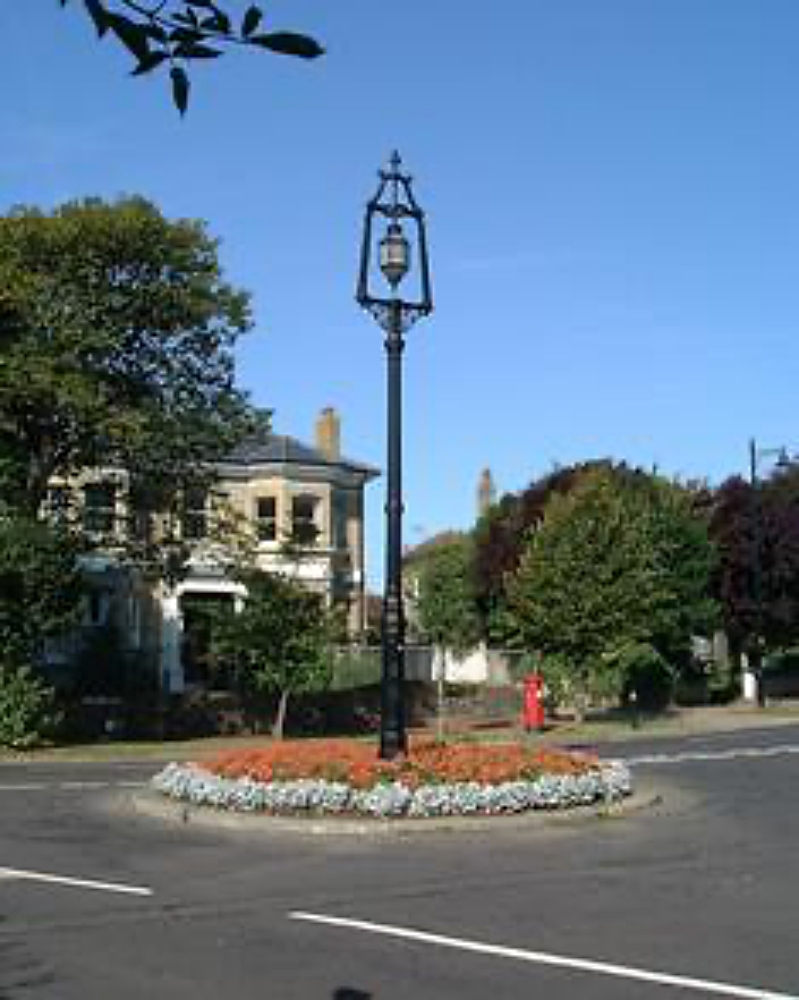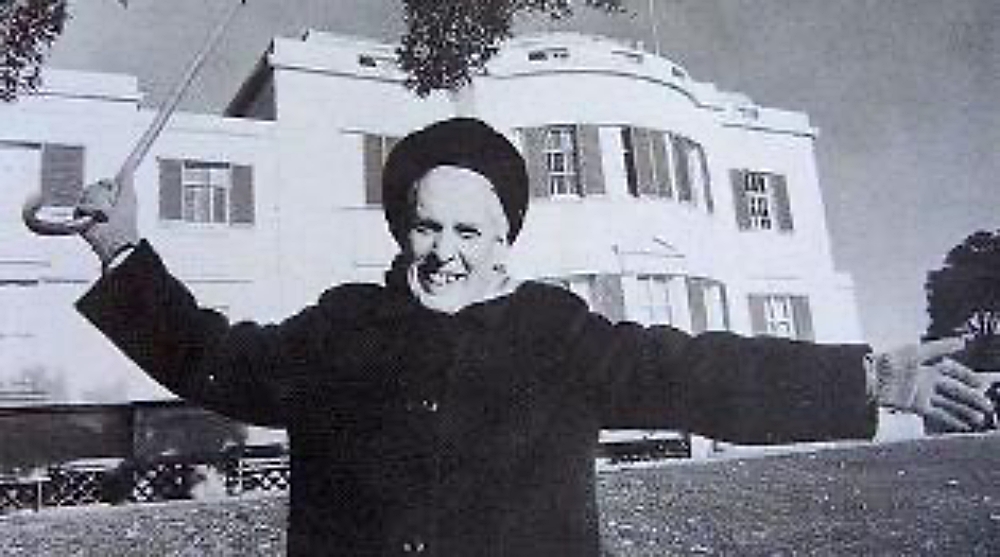Pat Baring – The “conservationalist battleaxe”
THE seal was set on Mrs Pat Baring’s place in Worthing’s folk-lore the moment she decided to sit down in the middle of the town’s leafy Farncombe Road to prevent council workmen removing Worthing’s last truly elegant Victorian lamp-post.

The town’s highways committee had decided to remove a tiny traffic island and its lamp-post, at the junction of Farncombe Road and Church Walk, after its chairman, David Hill, declared: “They constitute a hazard and create a dangerous junction that should be replaced by bollards.”
To Mrs Baring, who had spent her senior years defending Worthing’s few historical landmark buildings from the bulldozers, it was like presenting a red rag to a bull. “There have never been any accidents here,” protested battling Pat, and when council workmen arrived at seven o’clock one morning to remove the offending lamp-post, they found her defiantly staging a one-widow sit-in on the very spot they had been told to begin drilling.
There, battling Pat remained, under blazing sunshine, until town hall officials finally capitulated and called off the work, excusing themselves that they “feared for her safety”. The lamp post is still there today, an elegant (and hopefully permanent) memorial to a true battling Brit.
A town councillor who once came off worst in a head-on verbal collision with the late Mrs Pat Baring described her as “a vociferous old battleaxe”. That opponent meant it in a derogatory sense but it was a description the feisty Mrs Baring accepted with gleeful delight.
Not that the indomitable Pat was flippant. She was passionate about her main objective in the 1960s and 70s, which was to save the rapidly disappearing architectural gems of her beloved Worthing from the acres of concrete threatened by zealous developers.
Age was no barrier for “battling Pat”, as her friends came to call her. She founded the Worthing Civic Society long after retirement age and was still its secretary at the age of 82. She constantly fought members of Worthing Borough Council and contested some of their planning decisions with amazing stamina and determination.

In January, 1978, only days after undergoing a hip replacement operation in Worthing Hospital, she was fighting an application before the housing committee to demolish listed buildings on Marine Parade. “Worthing seafront has a character of its own,” was her stirring call.
“If these buildings are knocked down, they would be replaced by a series of blocks of flats and, in time, the character would be lost. It would become like a Costa Brava with those rubbish dumps!” That provoked retaliation from councillor Robert Tilney, who retorted: “Mrs Baring and her fellow-conservationists are trying to preserve a right old mess on the seafront, to the detriment of Worthing. I hope they’re ashamed of themselves.”
Mrs Baring may at times have acted in an unblushingly outrageous manner and possibly lost more battles with authority than she won but she was never ashamed and was often quoted as saying: “There is more to a fight than winning.“ “Things that would have happened unnoticed have been brought out into the light. People have been alerted and seen the problem.”
The problem? For Pat Baring, it was the changing face of her adopted town of Worthing – she was born in York. From 1963, until her death at the age of 87, in 1982, she fought tooth and nail to preserve the essential flavour of our pleasant seaside town, with its occasional hints of a former elegance.
Her battle headquarters was her home in leafy seclusion on the corner of Church Walk and Farncombe Road, where she was surrounded by beautiful old Victorian properties with nice big gardens but prophesied “the developers will be hovering before long”.
She was soon proved right, as one by one the properties were sold to development companies. Four times she was engaged in battle in vain attempts to prevent the demolition of houses in the area, which would be replaced “by horrible blocks of flats and offices”.

In one, she did her research so thoroughly that she brought to light an old covenant of 1865, which could have meant preserving a corner of Victoriana in Farncombe Road. Money to fight a building company was the obstacle and in the end she conceded defeat.
But not before she had made her point so plainly that the developers handed a substantial sum to her beloved National Trust.
Pat Baring founded Worthing Civic Society “to introduce an element of informed public comment and criticism, hitherto absent, into Worthing’s town planning”. She became its chairman in 1979.
A colleague recalled her with admiration: “She set almost impossibly high standards with the fantastic amount of energy she devoted to every issue.” Unlike borough councillor Iris Smith, who, in 1977, declared that Mrs Baring “ has done a great disservice to the Worthing. Because of her, buildings have been preserved that should have come down years ago”.
When Mrs Baring fought to prevent the demolition of faded but elegant Bedford Row in 1979, her own ward’s borough councillor, Frank Hammond, said he hoped the Civic Society would fail in its attempts to save the Row “then we would at last see the end of the 83-year-old nuisance” – meaning Mrs Baring.
Of one thing, there is no doubt. Battling Pat Baring will be remembered for her contribution to Worthing’s attractiveness long after her council opponents have disappeared beneath the dust of old borough council minutes.